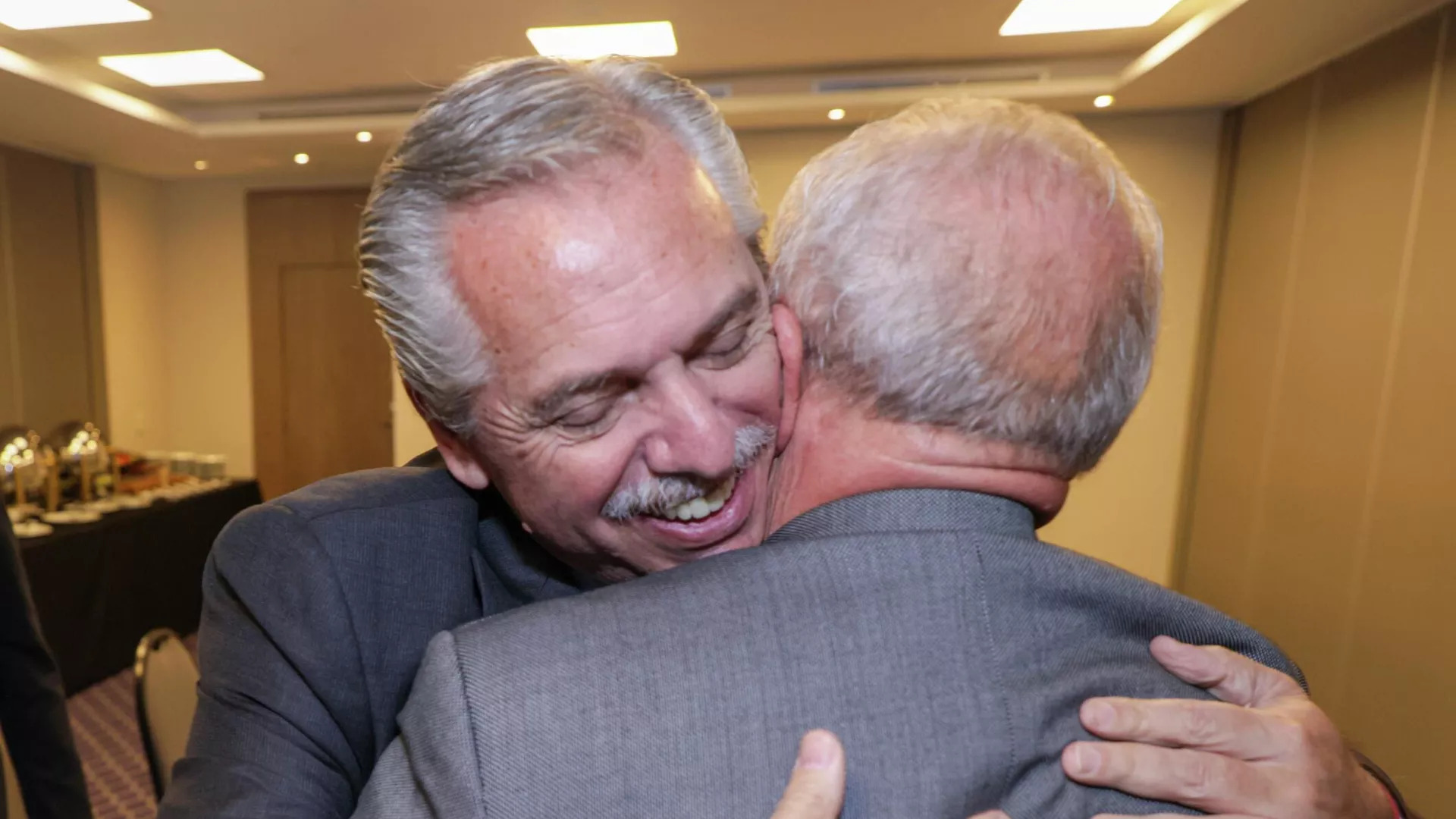Argentine President Alberto Fernández was the first sitting president to personally travel to Brazil to “hug” Lula da Silva, an apparent gesture of rapprochement in bilateral relations between Argentina and Brazil with an eye to the future.
Fernández and incumbent Brazilian President Jair Bolsonaro had delayed their bilateral meetings for over three years.
Hence, the Argentine’s visit to São Paulo the day after the second election round is a clear example of the convergence of positions and challenges between the two nations.
This was reiterated by Lula da Silva, who announced that the first country he will visit after taking office on Jan. 1, 2023, will be Argentina.

The ambitious project, presented three weeks ago by the Argentine ambassador to Brasilia, Daniel Scioli, and already in the hands of da Silva’s former foreign minister and current international advisor to the president-elect, Celso Amorín, envisions various areas of cooperation and integration to achieve unprecedented complementarity between the two countries.
Speaking to La Nación outlet, Daniel Scioli expressed enthusiasm for “the beginning of a new stage that will be the impetus for an integration agenda,” he said.
“The personal relationship between the president and da Silva will facilitate things,” the diplomatic representative stressed.
REVIVAL OF REGIONAL BLOCS
The main idea behind the “total integration” project between Argentina and Brazil is to strengthen regional bodies such as Mercosur, which has been frozen due to differences over import tariff policies – Brazil wanted to lower tariffs while Argentina tried to raise them – and Uruguay’s extra-bloc approach to seeking trade agreements with China.
Da Silva announced plans to revive the regional bloc, negotiate jointly with China, and resolve the agreement with the European Union, which Bolsonaro’s environmental policies had stalled.
CELAC
Another point in the letter is the effort to reinstate Brazil in the Community of Latin American and Caribbean States (CELAC), which is composed of 32 Latin American and Caribbean countries and will be chaired by Argentina until 2022, from which President Bolsonaro has excluded Brazil, contradicting the presence of Venezuela, Cuba, and Nicaragua in the forum.
On this point, Lula da Silva has already said he wants to return.
IDB PRESIDENCY
Another issue that Argentina and Brazil want to rewrite is the presentation of a joint candidacy for the presidency of the Inter-American Development Bank (IDB), which will become vacant after the departure of American Mauricio Claver-Carone on Sept. 26, 2022, a name trusted by former U.S. President Donald Trump.
SOUTH AMERICAN ENERGY MARKET
Among the concrete political and economic goals of “total integration” envisioned in the future relationship between Brasilia and Buenos Aires in the 16-page document that Scioli delivered to Amorín is the ambitious project of jointly creating a common energy market between the two nations.
The project aims at the complementarity of the primary energy sources of the two countries: Argentine gas and Brazilian electricity.
PAYMENT SYSTEM IN NATIONAL CURRENCIES
Argentina advocates reintroducing a payment system in reais and Argentine pesos for bilateral trade transactions, a project conceived in 2008 without much significance.
Although the document does not mention the creation of a common currency, the project “will allow exporters to conduct their transactions in pesos and reals, facilitating transactions since traders do not need dollars, thus reducing transaction costs for access to international trade,” according to the text communicated by the Argentine government.
BUENOS AIRES – SÃO PAULO AIR BRIDGE
To increase the frequency of binational flights – which stands at about 160 per month, while in January 2019, there were 354 – the project was conceived to create an air bridge between the terminals of Aeroparque in Buenos Aires and Congonhas, the main airport in São Paulo, La Nación said.
A “Mercosur air bridge” is expected to increase the frequency of flights, allowing more meaningful direct trade exchanges between the main cities of the two countries.
With information from La Nacion and Sputnik

